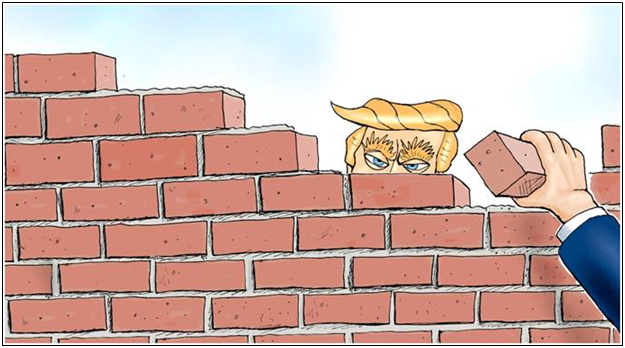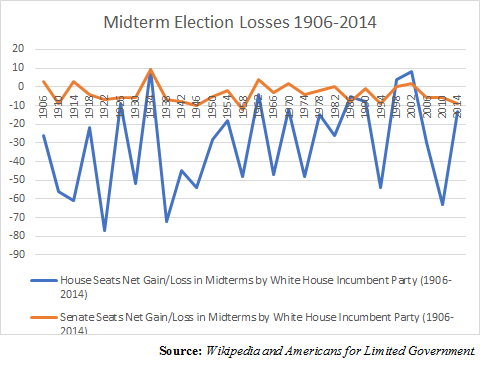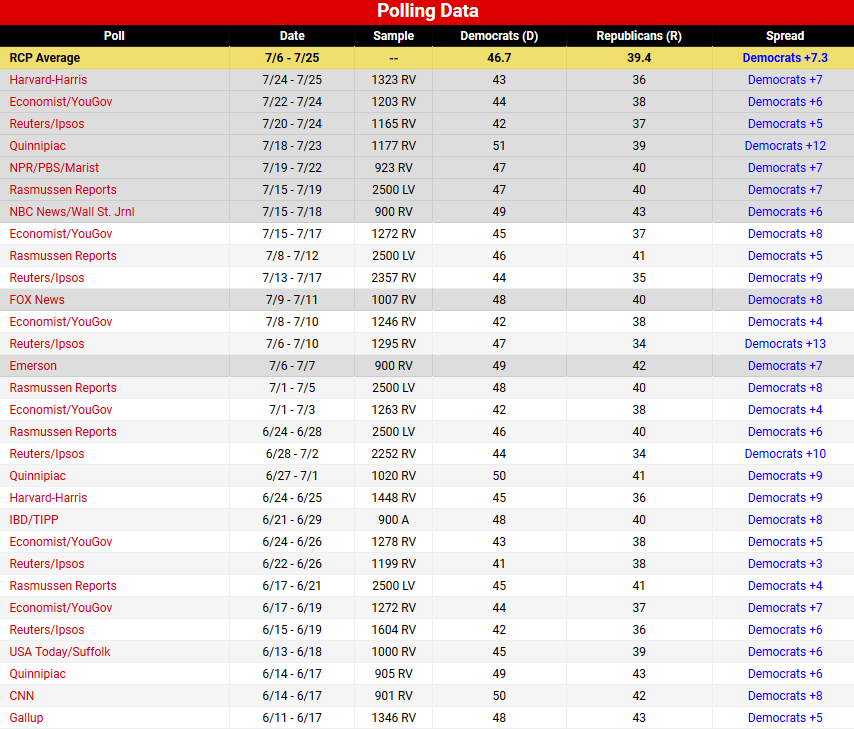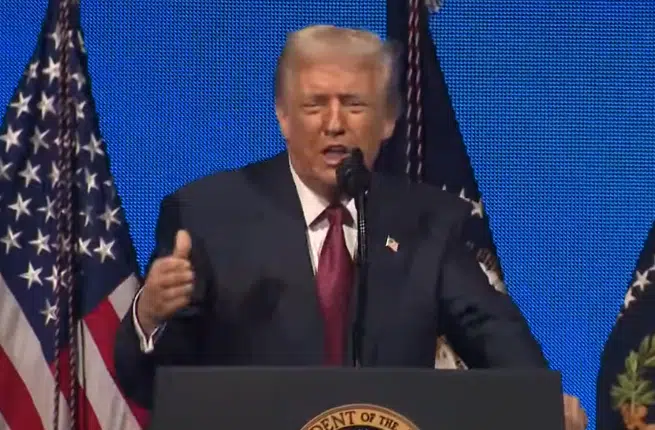President Donald Trump is doubling down on his threat to instigate a partial government shutdown at the end of September over the failure to fully fund his proposed southern border wall and Congress’ failure to include reforms to the nation’s broken immigration system.
On July 29, the President had tweeted, “I would be willing to ‘shut down’ government if the Democrats do not give us the votes for Border Security, which includes the Wall! Must get rid of Lottery, Catch & Release etc. and finally go to system of Immigration based on MERIT! We need great people coming into our Country!”
And then again, on July 31, Trump added, “I don’t care what the political ramifications are, our immigration laws and border security have been a complete and total disaster for decades, and there is no way that the Democrats will allow it to be fixed without a Government Shutdown… Border Security is National Security, and National Security is the long-term viability of our Country. A Government Shutdown is a very small price to pay for a safe and Prosperous America!”
That essentially means the President will have to veto whatever funding bill is brought to his desk. But to sustain it, he needs one third of either the House or Senate to vote against overriding the veto.
That means 144 House Republicans or 34 GOP Senators would have to vote with the President to sustain the veto. It won’t matter how the midterms go. If one-third of either chamber sticks with Trump, he’ll win, even if a shutdown drags into the New Year. And then a real negotiation could be had about the funding bill and how to best secure the border.
The President’s veto threat comes as Senate Majority Leader Mitch McConnell (R-Ky.) has said that wall funding “probably” wouldn’t happen until the lame duck session after the election.
But after the President’s second barrage of tweets on July 31, McConnell sounded more conciliatory: “I support what the president is trying to do on the wall. Most of my members do as well… We’re going to continue to discuss it with him and hope that this process can achieve what he would like to achieve on the wall and also get these appropriations bills signed into law which is quite different than what’s happened in the past.”
This could be a make or break moment for the Congressional Republican majority, but polling as usual could have them airing against standing with the President if they view taking a risk prior to the midterm elections in November as being too high.
Of course, cowering on this issue right before the election could very well be a death sentence to the GOP majority anyway. The way you break the midterm jinx is by dealing defeats to your opponents, not to your own side.
As it is, midterms are hard enough. The White House incumbent party tends to lose House seats in midterm elections 89 percent of the time dating back a century, with losses averaging 35 seats. The exceptions were 1934, 1998 and 2002.
Sometimes it’s not that bad, though. In 1926, 1962, 1986 and 1990 the losses were kept to less than 10 seats. 1954, 1970, 1978 and 2014 the losses were less than 20 seats.
In the Senate, the White House incumbent party tends to lose Senate seats about 71 percent of the time, with losses averaging about 6 seats. Here, there are more exceptions where seats were either gained or none lost: 1906, 1914, 1934, 1962, 1970, 1982, 1998 and 2002.
The overall bad trend could be mitigated by a favorable electoral map for Republicans.
The states Republicans are defending, with the exception of Nevada, were all won by Trump in 2016 easily: Arizona, Mississippi, Nebraska, North Dakota, Tennessee, Texas, Utah and Wyoming.
Plus ten Democrat seats up for election were in states that Trump carried: Florida, Indiana, Missouri, Montana, North Dakota, West Virginia, Wisconsin, Michigan, Pennsylvania and Ohio.
So if there were a year to break the midterm jinx, this could be it. But Republicans need to do something to deliver a big win for their constituents in 2018. The polling shows what many have projected to be a “blue wave.” Republicans have not led the generic Congressional ballot question once throughout all of 2018. Just look at the sea of blue courtesy of Real Clear Politics:
Now, leading the generic question does not necessarily guarantee victory in terms of winning the House and the Senate. Democrats are said to need something like a 6-or-7-point edge to win back the House. Picking up the Senate takes a bit more supposedly.
But what if Republicans could deal Democrats a major setback?
One thing Republicans know Trump’s base gravitated to in the 2016 election was his promise to secure the southern border and build the wall. It was and remains a leading issue of concern for Republicans nationwide. It’s why Trump won.
Now it is time for 144 House Republicans and/or 33 Senators to decide if they will follow the leader of their party and the nation, the President, or stand on the sidelines and let the Democrats run policy on spending priorities.
Instead, what if they could force funding for the border wall before the midterms? That might dispirit Democrats. Imagine the President getting his Supreme Court justices confirmed, his tax cuts passed, his defense spending increases booked and then his signature legislative proposal, the wall, fully funded.
Amid a roaring economic outlook amid deregulation, better trade deals and lower taxes, as labor participation among working age adults surges, and it could just be enough for Republicans to rally their base and beat the midterm jinx while sending the #Resistance into the electoral equivalent of apoplectic shock.
But the GOP has to roll the dice and follow President Trump. He can’t get it done by himself, and neither can they. It’s time to fight.
Robert Romano is the Vice President of Public Policy at Americans for Limited Government.









